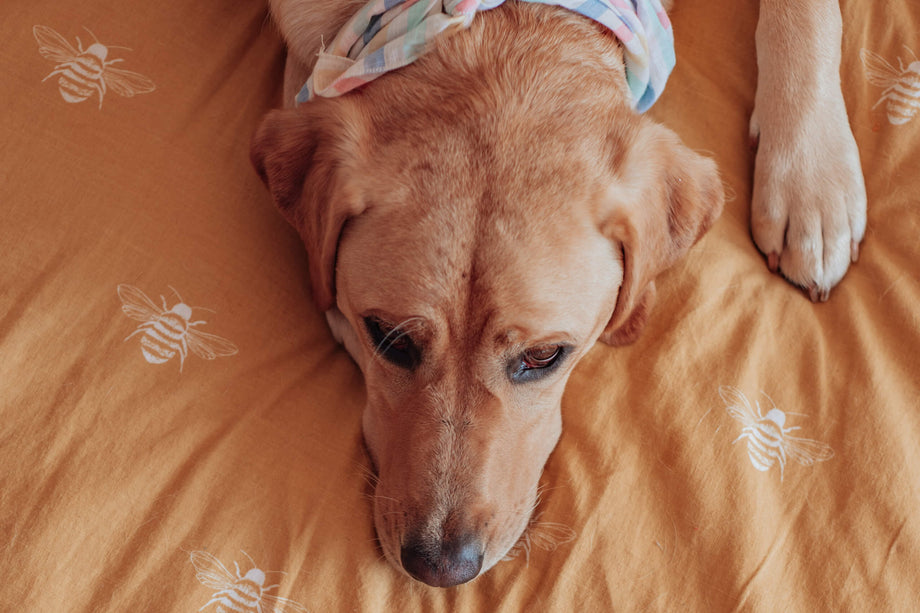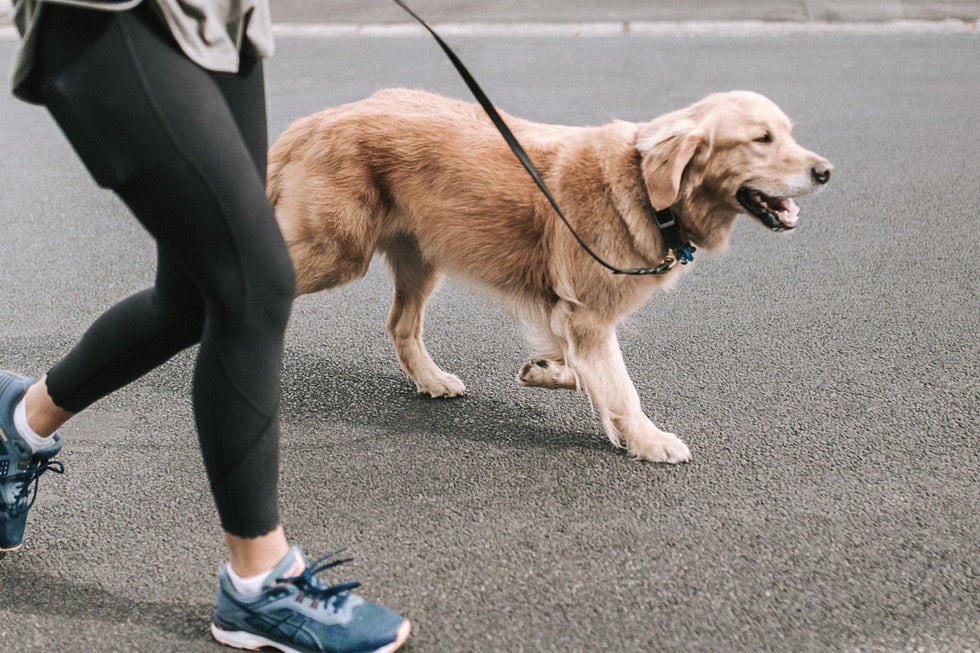Where Should Your Dog Sleep? Understanding Sleeping Habits for a Happy Furry Friend

The best spot for your dog to sleep to ensure everyone gets a good night's sleep actually comes down to personal preference - yours, and your dog's.
It's important to understand the sleep needs of dogs, and get to know your dog's own preferences. Dog owners supporting their dog's sleep preferences can create harmonious living for pooch and human alike.
So, where should your dog sleep at night time? Let's have a look at the options.

Dog's sleep patterns
It's a good idea to get to know your dog's own sleep behaviour. A dog's sleep patterns will likely change as they grow - younger dogs sleep more than adult dogs, and then senior dogs sleep more again.
How many hours of sleep do dogs need?
The average daily sleep of adult dogs is around 11 hours. However, puppies and senior dogs will likely need much more than this - around 18 to 20 hours a day!
Why does my dog sleep against me?
During daytime naps or at night time, you may have noticed your furry friend is happiest when they're sleeping right up against you.
Simply put, this means they feel comfortable and safe with you. Puppies snuggle up with their littermates for warmth and comfort - and do the same with their humans.
Sleeping right up against you is also a way your pooch is showing they're ready to protect you. Doggos feel most vulnerable in sleep, so they want to ensure their favourite people in the world feel safe themselves.
To read more: Why Does My Dog Sleep So Close To Me?
Where should my dog sleep at night time?
There's a few different options for where your dog can sleep at night time. What works for one family may not work for another.
Crate training
When you bring your new puppy home, they will likely be nervous - especially at night time. Crate training can help acclimate your furry best friend to their new home. It can also be a good way of keeping the puppy energy and mischief contained during the night.
Crate training taps into the instinct dogs have to find somewhere quiet and safe to sleep. Crate training has benefits beyond sleep, such as helping with house training and ease of travel.
Young puppies that are being crate trained will usually prefer to be in your bedroom, or nearby in the hallway during the night. This way they will feel comforted by your presence, and you'll be able to hear them whine when they need to go outside.
A dog's crate doesn't need to be bare. A puppy's crate should have a dog bed or comfy blanket and cushions, making the space inviting for your little furry friend. Their crate should be seen as a comforting place to rest, not as a punishment.
To read more: All You Need To Know About Crate Training
Dog bed in living room or bedroom
Older dogs or dogs that are well trained may be perfectly happy to spend the night in their own dog bed. A dog bed beside the human bed or in the living room are good options, it just depends on personal preference. Make sure they have a comfy spot to sleep, as a sleeping dog shouldn't be snoozing on a cold hard floor.
It pays to know your dog and their behaviour. If your pooch is prone to night time mischievous activities around the house, giving them free reign while the humans are sleeping may not be the best option.

Human bed
Many pet owners will ask themselves at some point - should my dog sleep in the bedroom?
Many people choose to co-sleep with their dogs, and this is a perfectly valid arrangement if it works for you and all parties.
The pack mentality means that your dog will likely feel safe and comforted by sharing a sleep space with you. Co-sleeping with your dog can help with their separation anxiety and fear around being alone in the night.
However, the sleep schedule of a dog may lead to a restless night sleep for the pet parents. Dogs sleep in short bursts rather than one long stretch, so they may be moving around a bit during the night. Especially in the case of large dogs sharing your bed, this can be a bit disruptive.
That being said, some pooches are the perfect conscientious bed-mate. Even more impressive is that studies show sharing your bed with your dog can help with sleep disorders in humans, such as insomnia and anxiety.

Outside
The suitability of allowing your dog to sleep outside really comes down to the climate where you live, and the breed of your dog. Some dog breeds are not suited to sleeping outdoors.
If your dog sleeps outside, they need access to shelter from the elements. Ensure they have a comfortable dog bed, kennel or similar, and keep an eye out for any signs that they're cold or uncomfortable.
Some dog breeds that can sleep outside include:
- Siberian Husky
- Mastiff
- Rottweiler
- Australian Cattle Dog
Promoting good sleeping habits
There is no 'best place' for all dogs to sleep. The sleeping arrangements should be a comfortable compromise for both dog parent and doggo - be that a puppy crate, dog bed, outdoors or bed sharing. The best solution will be the one that allows everyone to be calm, comfortable, and get the most amount of good quality sleep.
Support your dog in lessening their anxiety around bedtime with WAG's new Calming Functional Jerky. With all natural ingredients, our Calming Jerky is designed to support the emotional and physical wellbeing of your pooch, and can be a great treat to use during crate training or to offer before bed if your new pup is still getting used to the sleeping arrangements.
Here at WAG we have a wide range of natural dog treats to support your doggo in every stage of their life. Shop the range online or at your local pet specialty store.
Shop the Recipe
WAG Team
Up Next
Joint Health for Dogs: How to Keep Your Furry Friend Agile and Happy






